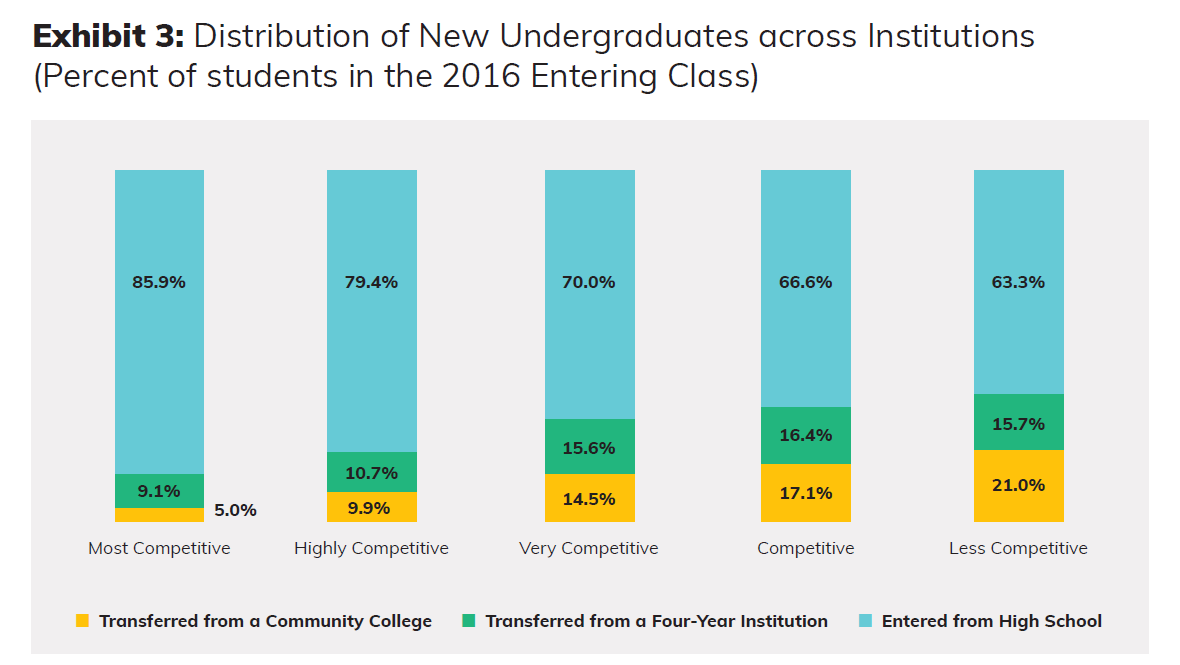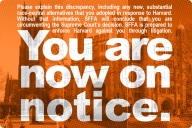You have /5 articles left.
Sign up for a free account or log in.

iStock
Many elite colleges say they are doing everything possible to enroll diverse classes of students, but are they overlooking a key strategy?
A report being released last week by the Jack Kent Cooke Foundation finds that the more competitive colleges are in admissions, the less likely they are to admit transfer students from community colleges. And indeed most of those admitted as transfers to competitive colleges are coming from other four-year institutions, not community colleges, the report finds. This is despite evidence in the report that community college students who enroll do succeed and are more likely than those admitted as freshmen to be from underrepresented minority groups, from low-income backgrounds or to be veterans of the U.S. military.
The report argues that the most selective colleges are failing to admit representative samples of American students by admitting so few transfer students. (The study uses the Barron's Competitiveness Index, which bases competitiveness rankings on admit rates and other factors, similar to those used in other such rankings, and data from the National Student Clearinghouse.)
Nearly half of all college students (49.2 percent) start their college education at a community college, the report notes, but only about 5 percent of those who enroll in at the most competitive colleges started at community colleges. This is a "skewed representation" that means the most elite colleges are missing out on many talented students, the report said. And the more competitive a college, the less likely it is to enroll community college transfers.

Further, the data in the report show that public institutions generally do a bit better than private institutions on community college transfer. And that the most competitive institutions are not doing as well as they did a decade ago.

The report does not identify any institutions by name. But available data and past reporting show some of the trends in these admit rates.
Consider Princeton University, which in 1990 abandoned transfer admissions. The university's board agreed in 2016 to come up with a plan to again admit transfer students and in May announced that it had admitted 13 transfer applicants. They are among the 1,429 who applied. Of those admitted, eight identify as people of color, including biracial and multiracial students. Eight have served in or are still serving in the military. Eight studied at community colleges. None of those admitted are recruited athletes.
While Princeton is unusual in having banned transfer admissions for several decades, others among the hypercompetitive colleges admit very few transfer students. Harvard University says that it receives about 1,600 applications and typically enrolls 12. Stanford University, where the admit rate for freshmen is under 5 percent, reported that in one recent year, its admit rate for transfer applications was 1 percent, with 15 enrolling.
Some private colleges admit many more transfer students, and typically they admit transfers from community colleges. Dickinson College is much smaller (and while competitive in admissions is less competitive) than Harvard, Princeton or Stanford. But the college admits about 27 to 30 transfers each year, enrolling between 10 and 15. Dickinson works with faculty members in honors programs at community colleges to identify potential students and to provide academic advising so they are able to transfer as much credit as possible when they enroll.
But to the extent that elite colleges enroll big numbers of community college students, it is on the public side.
The University of California System (across all undergraduate campuses) admitted 28,750 transfer students in 2018. That may still be far fewer than the 137,000 freshmen admitted over all, but the percentage of new students coming in as transfers is far higher than the percentages at elite privates (and many other publics).
Jennifer Glynn, director of research at the Jack Kent Cooke Foundation and author of the report, said in an interview Monday that the research did not explore how many community college students applied to elite colleges, or the reasons why those colleges aren't recruiting and enrolling more of them. She said those are issues for additional research.
Glynn also noted that colleges have their own admissions strategies and that every institution "is going to need to balance the various competing factors" in allocating admissions slots.
But she also said that increased scrutiny of the way colleges consider race in admissions could encourage colleges to increase their numbers of community college transfer students. California's public universities are barred from considering race and ethnicity in admissions decisions. But large shares of the transfer students admitted at the most competitive UC institutions (Berkeley and UCLA) are from minority groups. If federal courts reviewing the challenge to Harvard's affirmative action programs impose similar limits, the community college strategy could still be a viable way to promote diversity, Glynn said.
"There are many institutions out there that are quite explicit that diversity in all forms is important," she said. "If it becomes illegal to consider certain things, I think naturally they could look to community colleges for a pool."
Community college transfers are not the only diverse group not being admitted in significant numbers to elite colleges. Veterans of the U.S. military tend to be underrepresented at the nation's selective four-year institutions and overrepresented at community colleges and for-profit institutions, according to a report Ithaka S+R released this week.
Janet L. Marling, executive director of the National Institute for the Study of Transfer Students, said she has seen some progress in recent years -- such as the shift by Princeton -- but that this progress needs to be considered in context.
"You've seen in the last couple of years that some have opened their doors, but we're talking 12 or so students. That is minuscule," she said. Public institutions and less elite private colleges are doing much more, she added.
Recruiting community college transfer students will be a challenge, she said. Some of them value enrolling at four-year institutions close to home, given that they may have jobs or family obligations. Many of them could succeed academically but do not see themselves attending the most competitive institutions, where many students enroll straight from high school and come from wealthy backgrounds. And even though these colleges offer generous financial aid, including to low-income transfer students, that's not something that these students know. "They don't have a clue how they could finance that kind of education," she said.







